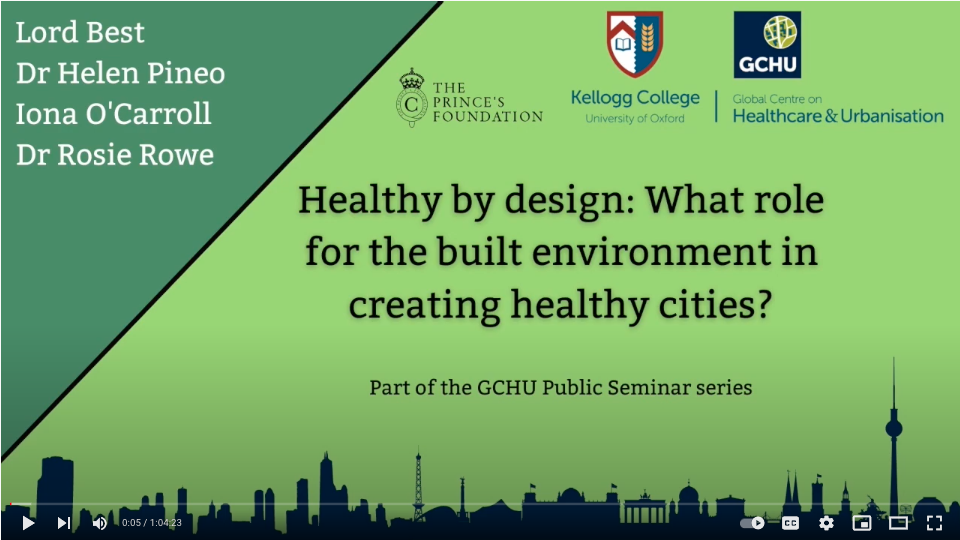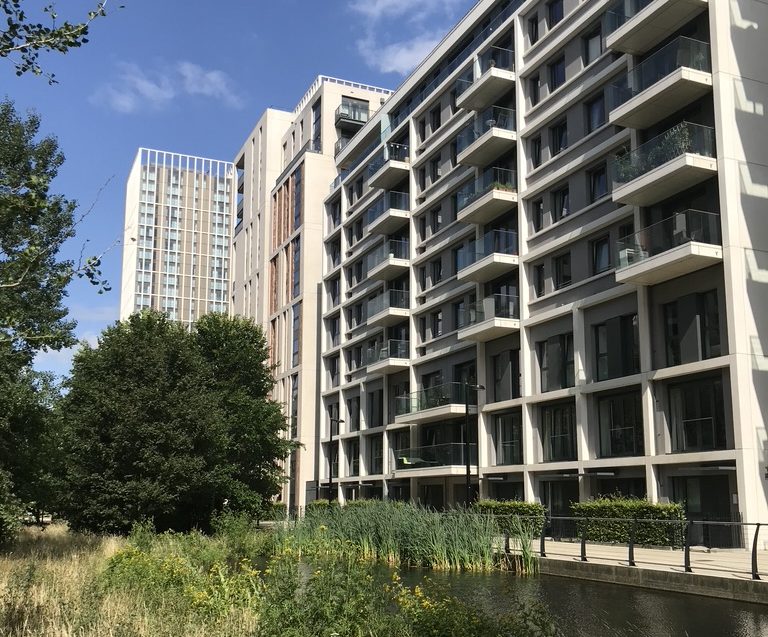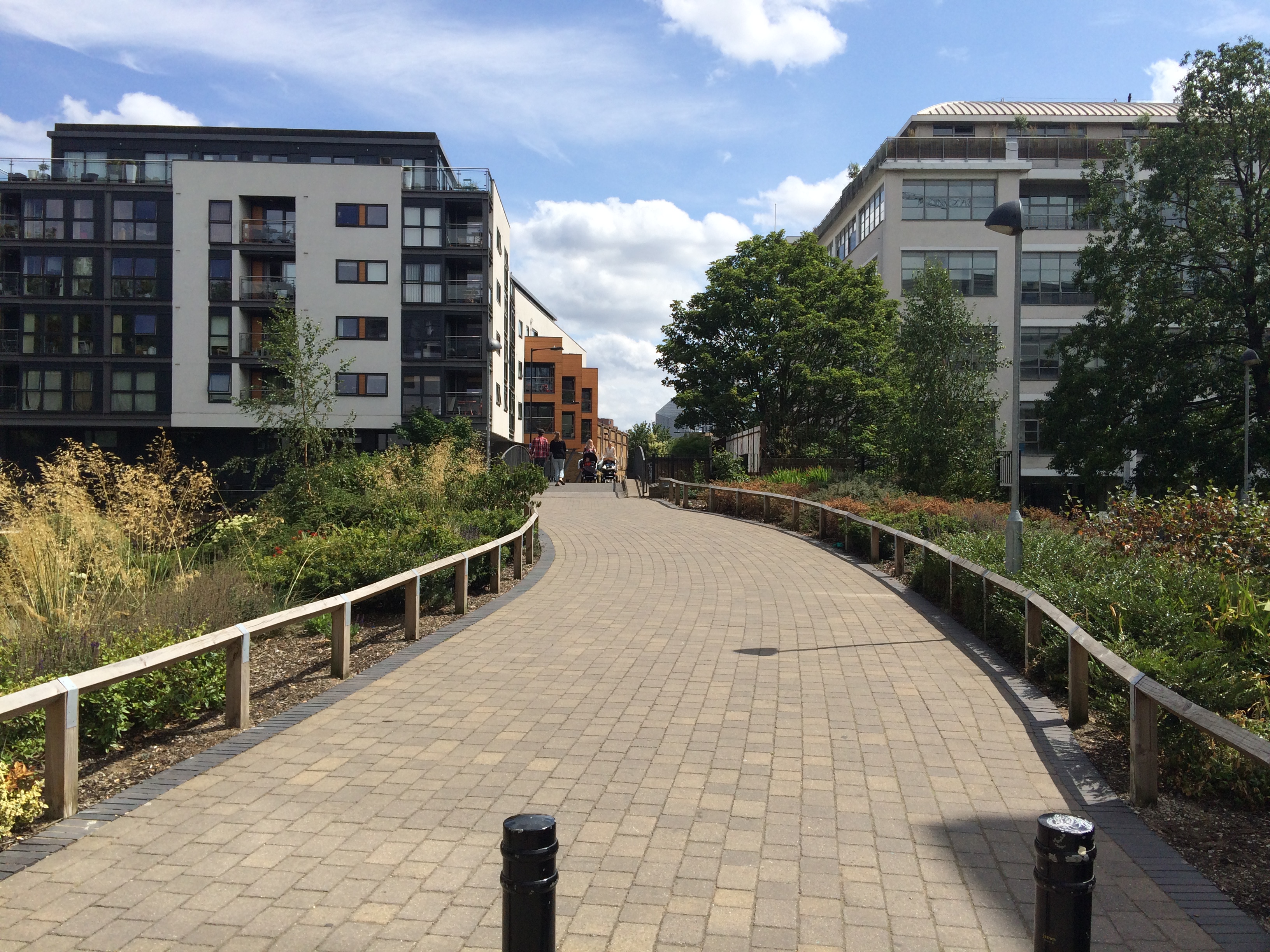The Global Centre for Healthcare and Urbanisation at Kellogg College, University of Oxford held a public seminar on healthy cities. I spoke about reframing our understanding of healthy urban environments, focusing on the need to improve the design quality of new development in England.
Strengthening planning & health in England
In England, the planning and public health systems are nationally structured to create the policy opportunities for healthy place-making in local government. Yet, there is a frequent failure to create healthy communities that supported by infrastructure and housing that supports equity, sustainability and inclusion. There are many reasons for this, including a narrow focus on housing delivery above issues of quality.
With collaborators working across English local and national government organisations, we wrote an analysis in the British Medical Journal outlining the opportunities to increase healthy urban planning in England.
Key recommendations from the analysis include:
- ‘Built environments are designed and developed using guidance from quality assured sources such as Public Health England and the Town and Country Planning Association
- Person centred design is favoured over an infrastructure led plan to ensure places support healthy, active communities
- The approach to person centred design is strengthened by ensuring that local health needs are linked to the planning policy process, led by integrated care systems
- A stronger focus is placed on prevention and promoting the conditions for good health within all built environment plans, designs, and developments.’
This collaboration and the resulting paper was developed following a Salzburg Global Seminar in partnership with Robert Wood Johnson Foundation. A number of other papers and blogs were written by global practitioners and academics working in healthy and equitable urban planning.
References
McKinnon, G., Pineo, H., Chang, M., Taylor-Green, L., Strategy, A.J., Toms, R., 2020. Strengthening the links between planning and health in England. BMJ 369. https://doi.org/10.1136/bmj.m795
Cities, Health and Well-being
The Royal Institution of Chartered Surveyors commissioned an insight report on ‘Cities, Health and Well-being’. The report explains how urban environments can affect both health and wellbeing in different settings.
Readers will find the following topics:
- An introduction to health in cities, including key urban health trends of increasing chronic diseases and physical inactivity
- An overview of urban environment factors that affect health
- International examples of urban planning policies and new development that have integrated health considerations
- A comparison and overview of building standards that relate to health, particularly the WELL Building Standard and Fitwel
- Discussion of the financial value and cost of achieving healthy places
- A set of top tips for getting started (aimed at built environment professionals).
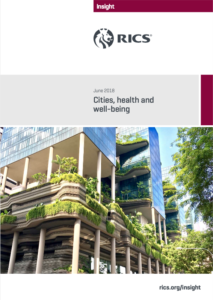
Pineo, H., Rydin, Y., 2018. Cities, health and well-being. Royal Institution of Chartered Surveyors, London.
Planners and health professionals: evidence-based practitioners
I recently presented to a national conference of med students on the topic of planning for health. This required me to think really clearly on what the most important message was and how to get it across without using planning jargon. Using terms that resonate with health experts and providing concrete reasons to engage is what planners need to do generally to overcome the current barriers to collaboration. This ended up being a very reflective process about the role and power of the planning system. It’s fairly easy to present what planners do in theory but the practice of actually delivering things on the ground is full of challenges and sometimes disappointments. The best place to start the discussion is where planners and doctors would look first: what does the evidence say?
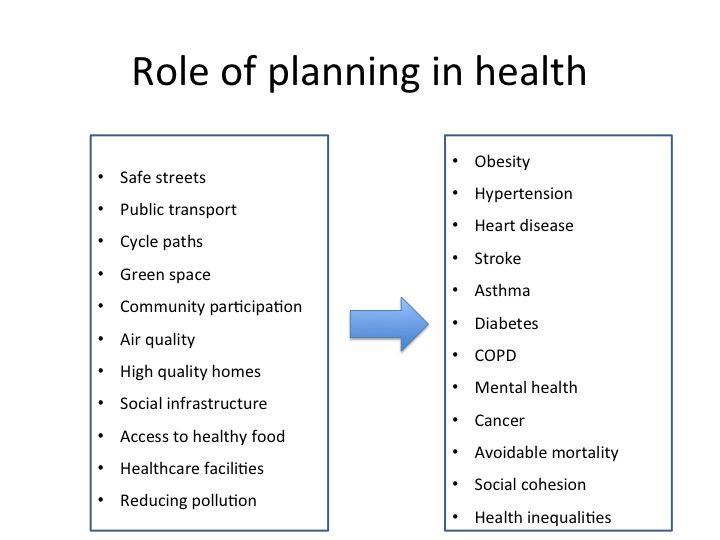
Public health professionals have a great deal of data about the health issues affecting people in a given local authority area. Some of this information is freely available on the web from sources like the Public Health Observatories. This data alone is no use unless you know which changes or improvements to the built environment will help address health issues. There is now a growing body of research demonstrating the health benefits of high quality places (including: housing, public space, transport, green space, and more). In reviewing a sampling of Joint Strategic Needs Assessments it is clear that public health professionals in local authorities have awareness of how planning can help create a health promoting environment. But the evidence that planners would need to deliver these changes on the ground goes beyond proof that a problem exists.
In many cases the changes required to improve health are about the wider determinants of health, which are linked to planning, including: housing; accessible/inclusive environments that promote active and social lifestyles; jobs; education; and, crime. Given the scale of new housing required in England there is significant opportunity to ensure that the homes and communities of the future will support our good health, rather than contribute to ill health. And this is where the challenge comes in. Planners know what good quality design looks like. They have the knowledge and skills to work with communities, design teams, and developers to bring about high quality homes and places. And in recent years they have had nationally available standards (such as the Code for Sustainable Homes) to ensure developers consistently follow through with agreements made before houses are built.
The Coalition government’s deregulatory approach will mean that planners cannot use some of these tools to push for high quality development. Even if they are allowed to require quality through a new set of national standards they will need to prove that it is necessary and would not affect the viability of housing developments. Furthermore, planners are having a difficult time negotiating added community benefits from developments due to viability arguments. This means that those public health professionals who until recently thought that planning could be a tool to address health needs by improving housing and the built environment will soon be disillusioned – unless we can build a financial case that proves that prioritising the short-term gains of a developer/land-owner will mean significant cost to the public purse in the medium to long-term. This could be done through the help of public health professionals who have the data and methodology to show the cost-effectiveness of specific spatial interventions.

In addition to cost evidence, planners could use evidence that shows the spatial variation of health issues across a local authority area. For example, it is useful to know where pockets of deprivation have health issues strongly associated with the wider determinants of health (see really interesting work from the University of Houston’s Community Design Resource Centre mentioned in the RTPI’s recent paper, see reference below). This information can help prioritise change and underline the argument for high quality regeneration. This is an exciting time with increasing recognition of the value of these two professions supporting each other to create healthier environments. There are challenges to overcome but there is also a growing group of specialists who understand the potential to increase wellbeing for everybody in society, not just those who can afford to live in the nicest places.
Resources:
I reviewed the Joint Strategic Needs Assessments for Knowsley, Sheffield and Hackney as a random selection of background for this blog post.
Chang, M., Ross, A. ‘Planning Health Places – report from the reuniting health with planning project’, Town and Country Planning Association, 2013
Royal Town Planning Institute, Planning Horizons No.3, ‘Promoting Healthy Cities‘, October 2014
In cities, bike storage is a matter of life and death
The recently published Harman Report on local standards for homes criticises bicycle storage standards. They can be “excessively detailed” and they don’t “take account of local circumstances (such as road safety or the availability of public transport options)”. As a regular cyclist living in London I can say that we desperately need those bicycle standards. The photo of the hallway outside my flat is proof. Standards for home designs are made to protect us from new developments that skip over ‘the fine things in life’… like safe bicycle storage and energy efficient walls.
Continue reading “In cities, bike storage is a matter of life and death”
Planning for health and climate change in the UK
I’ve been wearing ‘climate change goggles’ for the last few months. This isn’t nearly as fun as wearing beer goggles, but the consequences are much more constructive. Last week I went to a seminar on using spatial planning to deliver health outcomes. The event was part of the launch of the King’s Fund report on ‘The Health Impacts of Spatial Planning Decisions’ which provides evidence for how planning policy and decisions can affect health outcomes. Viewing the event through the climate change lens allowed me to focus on a few key links between national agendas for health and the environment in the UK.
Climate change and health are cross cutting issues throughout planning policy statements. Work on both climate change mitigation and adaptation have direct effects on health outcomes in the UK. Reducing greenhouse gas emissions by collocating services and providing infrastructure for non-car travel will reduce air pollution and ‘obesogenic’ environments, in turn reducing heart and respiratory disease and obesity. Dealing with energy efficiency in new-build and existing housing stock is essential to reduce CO2 emissions but is also vital to address our vulnerability to increasing extreme weather events (e.g. heatwaves like the summer of 2003). Continue reading “Planning for health and climate change in the UK”

